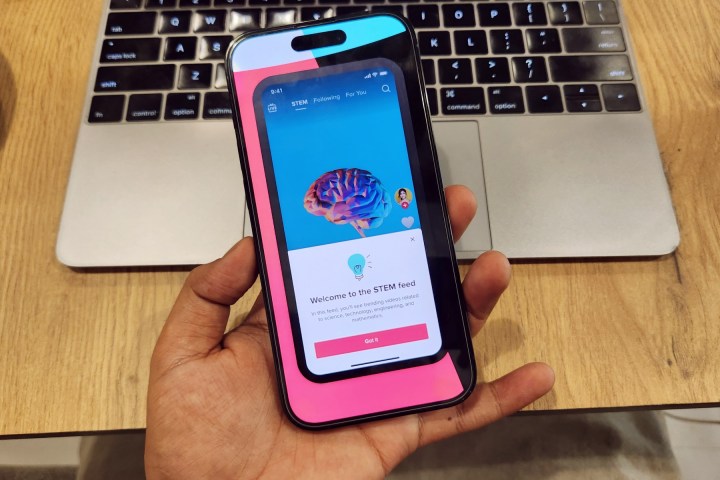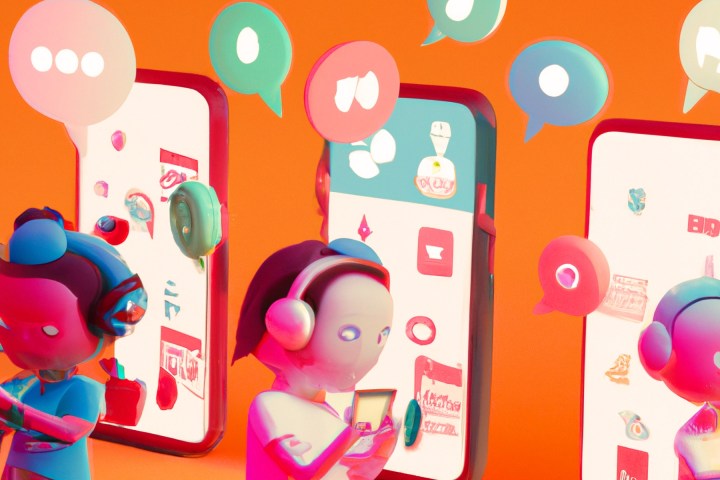TikTok has announced plans for launching a dedicated feed hosting STEM (Science, Technology, Mathematics, and Engineering) content. The company says it will “serve as a destination for those looking to dive into those enriching topics further.”
The social media titan notes that the feed will help aspiring young minds discover productive content. And to make sure that the content appearing in this STEM-dedicated section is accurate and reliable, the company is also doubling down on its partnership with Poynter and Common Sense network.

TikTok is implementing a system of dual checkpoints for content posted in the STEM feed in a bid to ensure that the information is credible and doesn’t end up misleading the young audience. It’s a step in the right direction, but it’s also hard to ignore the fact that the platform is also doing it to grab more eyeballs with such content.
In its official press note, TikTok says that videos with STEM-related hashtags have garnered over 110 billion videos so far. In hindsight, one would think that these educational scientific videos will help dispel some science-related misinformation. But given the current status of the misinformation pandemic that is thriving on TikTok, it seems the resources could be invested elsewhere.
A deeply problematic history

I’m not just talking about propaganda content that is politically motivated or harmful videos related to social well-being. Over the past three years, multiple agencies and experts have highlighted TikTok’s shortcomings in curbing its hoax and fake news problem through research and in-depth analyses.
Just a couple of days ago, research published in the BMJ Global Health journal concluded that videos covering information about monkeypox disease were often inaccurate and of low quality based on norms established by the Journal of the American Medical Association (JAMA).
One of the easiest ways to discover content around a particular trend or topic is using the hashtag system. It is quicker and free from any algorithmic shenanigans because the platform’s recommendations system tracks and serves videos across multiple interest points. The research team relied on hashtags and found that not a single video out of the 2,462 analyzed met all JAMA criteria.
While videos posted by certified doctors and science communicators were found to contain accurate information, those posted by the general public fared the worst. Overall, videos talking about monkeypox scored 39.56 out of 80 on the DISCERN scale, and a worrying 1.93 out of 4 on the JAMA scale.
To give an idea of the impact of such dubious content. the videos studied as part of the research had over 11,000 likes on average. However, this is not the first finding of its kind that calls attention to TikTok’s failure at curbing the spread of potentially harmful content aligned with science, health, and mental wellness on its viral social platform.
Research exposes TikTok’s failures

Just take a look at the findings from some recent research, with a majority of them affecting young minds that also happen to be the target audience for the STEM feed:
- University of Vienna research found that nearly three-fourths of videos posted by influencers talking about food and drink items on social media platforms like TikTok fail to meet the protocols set by the World Health Organization for children, as the items hawked by them contained a worryingly high amount of sugar, fat, and salt. Notably, most of these videos covered food items that are not permitted to be marketed to children.
- Research published in the PLOS Journal, which studied videos covering 10 hashtags, each with over a staggering one billion views, found that TikTok glorifies a toxic diet culture among teens and young adults that lacks proper expert guidance or accurate health information. “Each day, millions of teens and young adults are being fed content on TikTok that paints a very unrealistic and inaccurate picture of food, nutrition, and health,” says one of the researchers.
- An analysis published in BMJ found that fast-food and non-alcoholic beverage companies indirectly employ influencers and young users to market their unhealthy foods high in salt, fat, and sugar using tricks like creating a social challenge, stickers, filters, and exclusive special effects with brand imagery.
- Research published in the Tobacco Control journal analyzed videos depicting vaping or e-cigarette usage that has accumulated over 1.5 billion views. The team found that 63% of them portrayed e-cigarette usage in a positive light, while 35% of those videos were attached to a misleading “lifestyle and acceptability” theme.
- Just like e-cigarettes, other research published in the Journal of Studies on Alcohol and Drugs found that an astonishing 98% of videos talking about alcohol depicted it in a positive light.
- BJUI Compass research found TikTok to be a minefield of problematic content covering prostate conquer screening. When tested on the parameters of national screening guidelines, the entirety of TikTok videos was found to be of low to moderate quality in terms of credible health information, and to feature moderate to high levels of misinformation.
TikTok needs a focus shift

In the past few quarters, TikTok has taken steps to ensure that its young audience is safe on the platform, especially when it comes to personal safety as far as communication with strangers is concerned. The family controls have also ebbe tightened, and tailoring the algorithmic recommendations based on age verification is also a welcome step.
However, the harsh reality is that a majority of the restrictions implemented by TikTok can also be bypassed with relative ease. A STEM feed is definitely commendable as it instills the necessary scientific temper in the young user base, while also offering them an avenue that keeps them from engaging with harmful content.
However, there are more pressing problems related to the direct physical and mental wellness of its young audience that need to be addressed first. Alongside the likes of Snapchat and Instagram, TikTok’s name has already popped up in analyses that link deaths of young people from fentanyl overdose to social media usage.
It doesn’t take much brainstorming to arrive at the conclusion that TikTok needs to solve the more urgent issues with the proliferation of harmful content — especially for the millions of its young users — before it sets out to teach a generation of social media-savvy users how to solve algebra problems.
Editors' Recommendations
- TikTok users sue to overturn Montana’s statewide ban of app
- Forget TikTok — it’s time to ban Twitter
- The more Instagram copies TikTok, the more I hate using it
- Getting tagged on TikTok by strangers? Here’s how to untag yourself
- What is the TikTok blackout challenge? The dangerous trend that has parents suing




